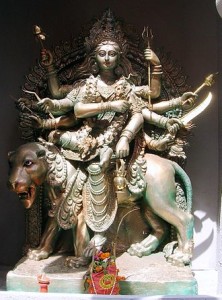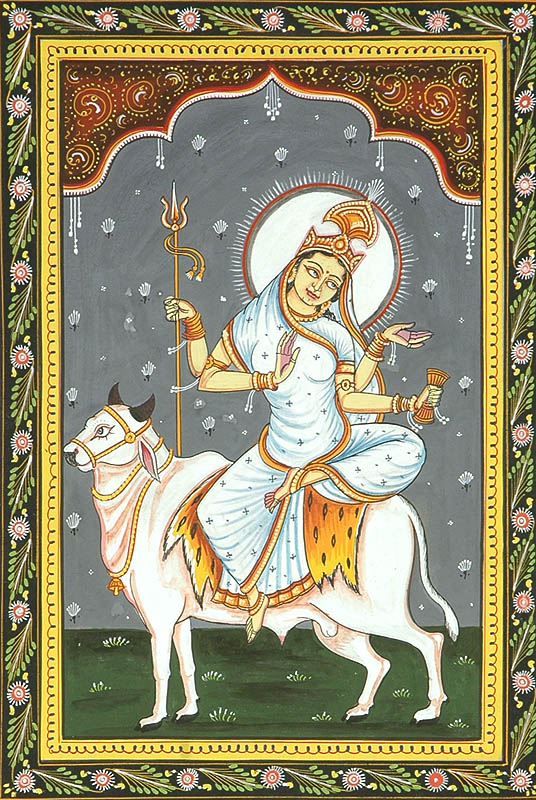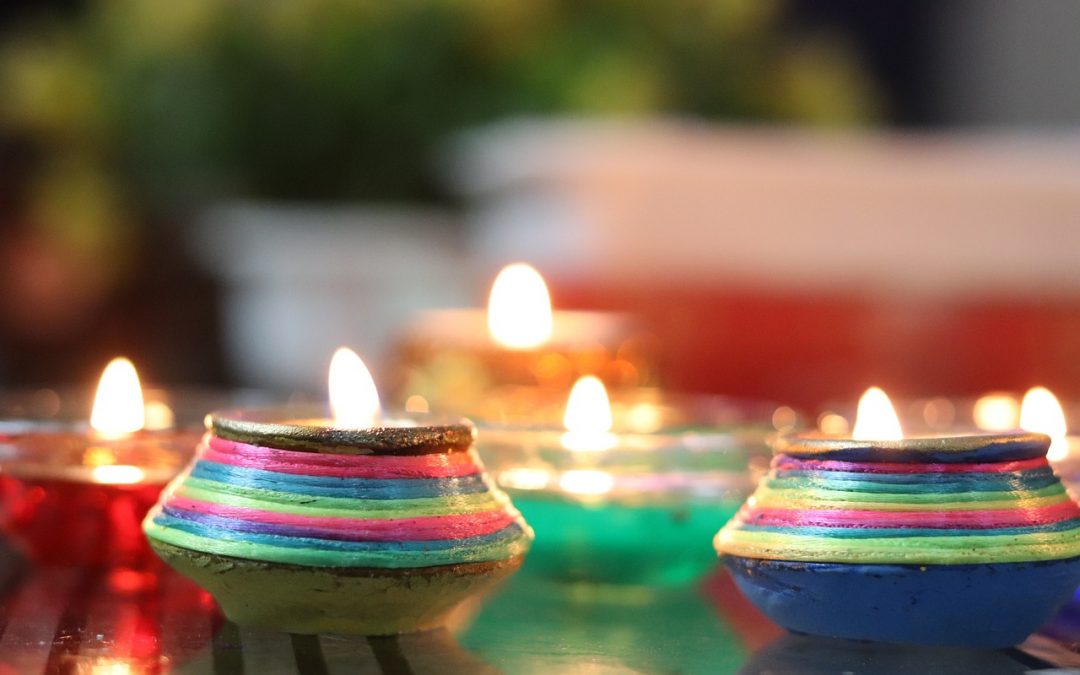
by Somya Devi | Nov 14, 2020 | Astrology, Conjunctions, Eclipses, Holy Days, Planets Changing Signs, Uncategorized
New Moon in Libra and Diwali 2020
The Sun and Moon will join at 29° sidereal Libra tonight, with exact alignment for a New Moon at 12:07 am EST. This Dark Moon night commemorates the Hindu holiday of Diwali, the festival of lights. Tonight will actually be the third but main night of the Diwali celebrations, which began on Dhanteras on November 12th. Be sure to light some candles tonight to celebrate light itself, as we move into the darkest part of the year in the north.
Scorpio cycle
The Sun and Moon again join at the very end of one sign, sidereal Libra, before both moving into Scorpio later the same day. Hence we are beginning the cycle of the Sun in Scorpio, but flavored with a certain Libran energy. The Scorpio Sun cycle is a time that compels us to look deeply into our own deep well of emotion, as Scorpio is both a water and insect sign, driving us towards the flow of emotions that is trapped within our external protective shell. Ruled by Mars, the warrior planet, we can see Scorpio as a spiritual warrior, and this time of year is an important one for exploring our personal vulnerabilities and sensitive places that may need more strength, courage, and healing.
Flavored by the Libra position of Sun and Moon as we begin this cycle, this investigation may lean heavily towards studying how we behave in relationships, what drives us to find balance and compromise, what wounds we are protecting that are keeping us from enjoying the happiness and balance that Venus wants to offer us.
Remembering that while Sun is debilitated in Libra, our sense of strength or our literal health may be weak this month. We continue to contemplate what it takes to maintain our personal strength and not become depleted while also relating with others and seeking outer balance. This is a very important time of year to nourish ourselves, and our inner light, as the outer light is descending. You can also make some herbal tea to nourish yourself during this vata (cold and dry) season. The nature of the Scorpio cycle will show us where we carry inner imbalance that requires some more harmonizing and lightening.
Vishaka Nakshatra
The Sun and Moon join in Vishaka nakshatra, a sign that bridges the end of Libra and the beginning of Scorpio. The “two-branched” sign is ruled by two deities, Lord Indra, the chief of the Gods, and Lord Agni, fire personified. This sign can harness a lot of power and leadership ability, but only once we choose the proper direction. You may find yourself at a crossroads this month and need to call in your guides to help you to choose the right direction, after which a lot of success is possible. The animal symbol for Vishaka is the male tiger.
Diwali
On the new Moon of the Hindu month of Ashwin (this month), we celebrate Diwali, the festival of lights. The festival began this year on November 12th (North America), on the 13th waning Moon phase of the previous cycle. This day is known as Dhanteras, or Dhanvantari Tryodashi, the celebration of the birth of Lord Dhanvantari, the father of Ayurvedic medicine. If you practice any healing tradition, especially Ayurveda, it is a good day to give thanks and call in auspicious blessings to your healing path or practice. Diwali is strongly associated with the Goddess Laxmi, and is a powerful time to connect with her, calling in her blessings for both material and spiritual prosperity.
We celebrate Diwali while the days are getting noticeably shorter and darker, and it is a time to invite more light into our lives, our hearts, and our world. This festival celebrates the victory of light over darkness, which is something to rejoice in and have faith in, even if we can’t outwardly observe it sometimes. Creating positive vibrations internally is the best way to begin growing and spreading them externally.
Diwali also commemorates Lord Ram’s and Sita’s return from exile after fourteen years (a story from the Ramayana). Lord Ram embodies the highest qualities of dharma, devotion, compassion, courage, and leadership. Diwali is also the start of a new lunar cycle, so it’s a great time to go within and summon these qualities to awaken and live through you.
Diwali (also seen as Divali, Deepawali or Deepavali) comes from the Sanskrit words deepa (light) and avali (row). It is traditional to light candles throughout Diwali (opt for electronic tea lights if you’re in a fire danger zone!), inviting the highest light into our homes and lives. The candles are lit to remind us of the inner divine light in us all. Though one flame can be used to light many others, it is not diminished by sharing its power of illumination. We can pray for the peace and happiness of all beings, and each one’s awareness of their inner light.
Eclipses
We are now entering the “eclipse season,” as we approach two eclipses that will occur November 30th and December 14th. With the nodes having recently moved onto their new axis—Rahu in Taurus and Ketu in Scorpio—this could activate some latent energy that has been lurking, unresolved in the shadows, in the areas of life that align with these two signs in your Vedic natal chart.
Be sure to watch for any disruptions, and any red flags, over the next month, and be sure not to make hasty decisions out of stress. Sadhana is very important, especially during the eclipses themselves, and doing inner work to investigate what is arising can serve in helping us to make important changes. This is the first eclipse cycle of three that will occur over the next year-and-a-half while the nodes transit this axis, so it is a jumping off point in seeing what work we need to do in these areas of our lives.
To see how the current transits affect and interplay with your chart and karma, you can request a personal reading here.

by Somya Devi | Oct 15, 2020 | Astrology, Conjunctions, Holy Days, Planets Changing Signs, Retrograde
New Moon and Navaratri
Tonight brings the dark Moon, coming towards a Moon-Sun alignment to begin a new Moon cycle on October 16th at 3:31 pm EDT, at the very end of sidereal Virgo (29°46’). This is also the start of the autumnal, Sharada or Maha Navaratri, which celebrates Goddess Durga and many forms of the goddess through on each of the first nine nights of the waxing Moon this month— October 16th through 24th in North America this year.
Lunar Cycle
Though the Sun and Moon align at the end of Virgo, they will move together into sidereal Libra only a few hours after the New Moon moment, thus beginning a lunar cycle with the Sun traveling through Libra. Libra energy is about balance. It is ruled by Venus, the planet of pleasure, harmony, and beauty. In a world that feels so imbalanced, our collective and individual energy will shift in ways that attempt to create greater balance, more compromise, and hopefully more harmony and beauty across the planet. The full Moon on October 31st will highlight Aries energy, Libra’s opposite, drawing us towards expressions of individual strength and will.
Sun Debilitated
The Sun is debilitated in Libra, because when we strive to compromise and take care of others we often do so at the expense of our own self-care. Remember that self-care is especially important this month when the Sun is at its weakest, and the seasons are changing from Pitta to Vata time across most of the northern hemisphere. In Ayurveda this seasonal junction is a good time to do some light cleansing but nothing that is too depleting as we move into vata time.
Mercury, Mars Retrograde
Mercury and Mars are still traveling in retrograde motion in Libra and Pisces, respectively. Mercury will station on November 3rd, election day in the U.S., sending his focused rays of attention and balance towards us. This could be favorable for bringing more rational and practical equilibrium into the political system. Mars will station and turn direct on November 11th, also directing some potent energy towards us, this time martial in nature which could stimulate some violence or fires, though not as drastic as we saw around his last station on October 3rd.

Chitra
This new Moon aligns with the Sun under Chitra nakshatra, “the brilliant.” This star-sign correlates with Spica, the brightest star in the sky, and bridges Virgo and Libra. It is ruled by Vishvakarma, the celestial architect. Moving from Virgo to Libra it combines both the energy of precision and perfection with that of beauty and grace. What are you trying to construct in the world that could use more architectural precision as well as beauty? This is a good time to call in this energy and channel it into any projects on your plate. Be careful that your inspiration does not lead to overindulgence under this intense nakshtra, whose animal symbol is the female tiger.
Maha Navaratri
The New Moon this month brings one of the largest Hindu festivals of the year, Maha Navaratri. Navaratri means “the nine nights,” and beginning with the first Moon phase after the dark Moon, the Goddess Devi is celebrated through many forms for the following nine nights and ten days. In North America Navaratri will be celebrated from October 16th through October 25th, with October 25th being the 10th day of Victory (an auspicious time for starting new endeavors, after 9 nights of worship). In some places Navaratri celebrates the goddess Durga in nine of her forms, while in other parts of India the festival commemorates Durga/Kali, Lakshmi, and Sarasvati for three nights each.
Devi is the creatrix, the warrioress, the nurturer, the purifyer, the protector. She can be found in the innocent and fertile maiden as well as the wise and learned crone. She is both the nurturing mother, and the one who gives “tough love.” The impassioned lover, the devoted bhakta, the disciplined yogini. We see Devi appear through us in innumerable manifestations. Through her many forms, she teaches us and offers us countless blessings–love, compassion, courage, learning, discipline, surrender, success, enlightenment, and bliss.
This festival is a time for honoring and celebrating the supreme feminine power in all her glory, and the many blessings she bestows upon us. Stay tuned for daily updates on how to connect with the many forms of the Goddess.
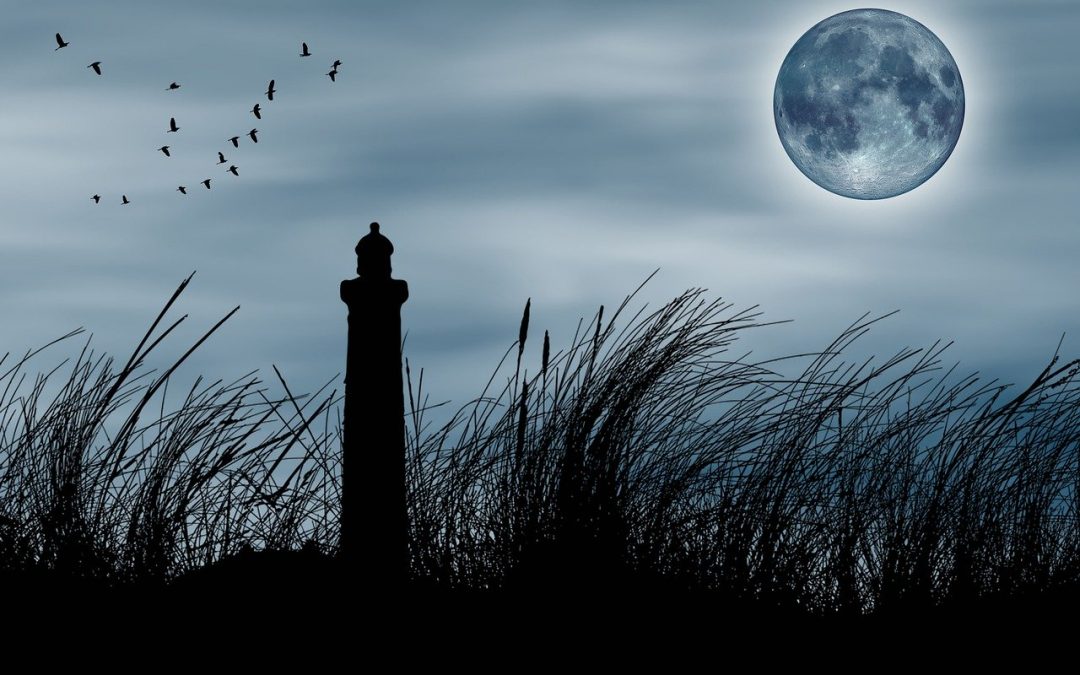
by Somya Devi | Aug 3, 2020 | Astrology, Conjunctions, Holy Days, Planets Changing Signs, Retrograde
Full Moon August 2020
The full Moon peaks today at 8:59 am PDT, joining a bright retrograde Saturn in his home sign of sidereal Capricorn. This Moon is fully illuminated opposite the Cancer Sun, highlighting for us the contrast between Cancer (living in the heart’s compassionate nature, guided by the mind and emotions) and Capricorn (looking at the serious responsibilities and consequences of our choices on the earthly plane). This full Moon aligns with the Vedic nakshatra of Shravana, the star of listening.
Capricorn Full Moon
Capricorn is Saturn’s earthly feminine (inward-facing) sign, wherein we look deeply at what is most important for us in the long-run on the material plane. Health, home, family, and ultimately, the protection of our sacred spirits are things that we must work hard to protect and create enduring structures to help them sustain over time. Capricorn teaches us about responsibility and sacrifice. At a societal level, we are seeing Saturn’s strong influence here pushing us to create structural change in the bodies of governance and sustenance… paring down authority that is corrupt in favor of systems that actually nourish humanity more broadly.
This is in contrast to the energy of the Cancer lunar cycle that we are in, as Sun travels through sidereal Cancer. Cancer is the sign of the mother, the heart, the lungs, and the arms, and teaches us to welcome all into our embrace with compassion and care. On an earthly plane, however (and under Saturn’s gaze), we may realize that we need to be more discerning as to whom and what we welcome, and step into the role of the firm and disciplining mother who says no to things that are not for our highest good overall.
Shravana
Shravana nakshatra is the star of “hearing,” symbolized by an ear. It relates to hearing and listening deeply. As Saturn takes his firm stance on our heads this month, what messages are you hearing under that weight? His tone is that of the old wise person encouraging us to grow up and step into a role of responsibility taking care of ourselves and whom and what we value the most. Sravana’s deity is Vishnu, the sustainer, and we can connect with his energy this full Moon as we listen for ways to become more sustainable in our own lives and as a society.
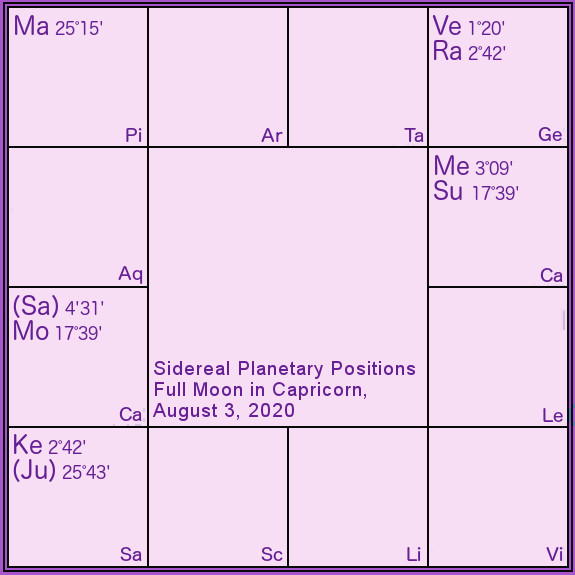
Venus with Rahu
Venus has transited into sidereal Gemini, leaving his long stint in his home sign of Taurus. As Venus joins Rahu, look for potential disturbances in romantic relationships, as well as mother nature. Both planets find themselves within one degree in Mrigashira nakshatra, a sign of wandering, so watch out for your desires wandering. There’s a chance you may encounter a voracious appetite for sensory indulgences—food, drink, sex, drugs—that are outside your normal range of consumption. If you can, channel this into an intense appreciation of nature, art, or music, or do some serious work on your relationships, to satisfy this combination.
Rahu-Ketu Transit Approaching
We are nearing the end of the transit of Rahu and Ketu through Gemini and Sagittarius, respectively, as the two will move into Taurus and Scorpio next month. Whatever house axis this is for you is where you have been most challenged to dig into your own shadows or blind spots over the last two years. These last few months are a time for integrating the lessons you have learned, as we prepare for a new axis to be stimulated by the nodal transit that begins in the end of September.
Gayatri Jayanti & Krishna Janmastami
Today is observed as Gayatri Jayanti in South India, the birth celebration of Goddess Gayatri, an embodiment of sunlight and the mother of the Vedas. It is a good time to chant the Gayatri mantra, especially around sunrise and sunset.
August 11th brings Krishna Janmastami, the celebration of the birth of Lord Krishna, the embodiment of divine love, kindness, compassion and playfulness.
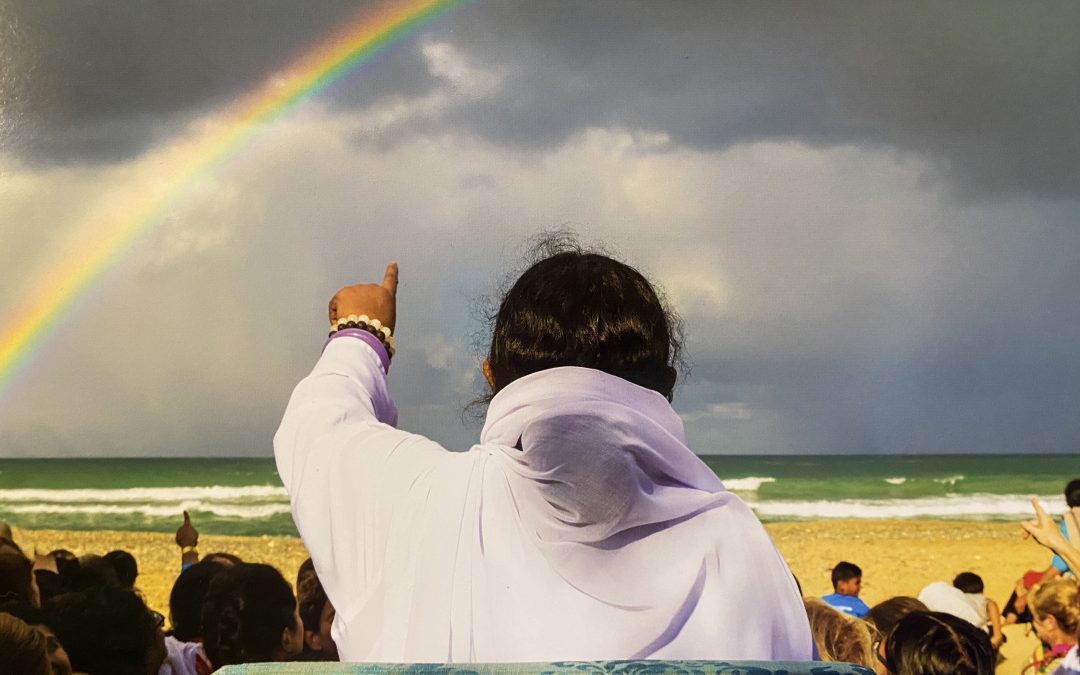
by Somya Devi | Jul 4, 2020 | Astrology, Conjunctions, Holy Days, Retrograde
Guru Purnima Full Moon Eclipse 2020
Tonight’s Full Moon in sidereal Sagittarius is the auspicious one known as Guru Purnima, a day for honoring our teachers, especially the satgurus and saints who bring light and truth to the world. The Full Moon peaks at 9:45pm PDT tonight, July 4th, and is accompanied by a penumbral lunar eclipse that peaks at 9:29 pm PDT. Though visible from the Americas, Africa, and Western Europe, this eclipse only brings a partial shadow across one side of the Moon. Its effects are being felt profoundly, however, during this cycle of change that has come with the two prior eclipses this summer.
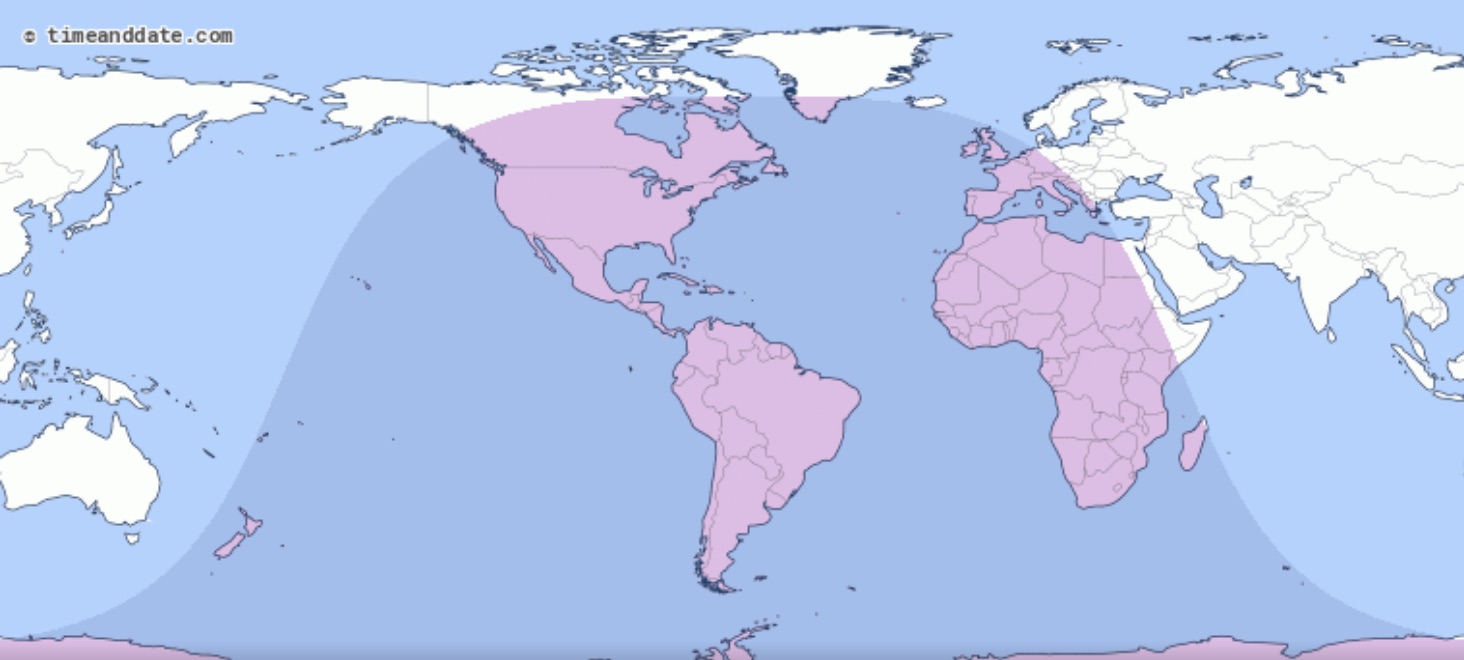
Guru Purnima
Guru in Sanskrit is often translated as dispeller of darkness, or ignorance. We live with so much suffering as humans, because even through a lifetime most of us are still immature to a degree that we haven’t found peace with the bounty offered to us by divine creation. That is not to say that hardship and real suffering does not exist, but great souls and saints, and even many elders who have “lived through it all” have still been able to find a certain equanimity towards life’s difficulties, along with compassion and an attitude of service, however small, for those who are hurting.
In Yoga Sutra 1.33, Patanjali says:
maitri karuna muditopeksanam sukha duhkha punyapunya visayanam bhavanatas citta prasadanam
“By cultivating attitudes of friendliness toward the happy, compassion for the unhappy, delight in the virtuous, and disregard toward the wicked, the mind retains its undisturbed calmness.”
We could dive into a full discussion of all of these, especially in these trying times. In the last point “disregard” could be also understood as indifference or equanimity … though I believe as humans anger has a place on the path to this level of peace. But the Guru has the ability to bless us with a grace to move beyond this anger and into a place of peace and spiritual strength, despite whatever outside circumstances may be.
Sagittarius
The Moon joins “Guru” (Jupiter) in his home-sign of (sidereal) Sagittarius this year. A bright, retrograde Jupiter can be seen close to the Moon tonight… though the south node Ketu also brings his (usually) invisible presence here, creating the shadow effect that will pass over the Moon. (Though of course the actual shadow is a result of the earth’s position, Earth, Sun and Moon are aligned with Rahu and Ketu astronomically, signaling the eclipses.)
Sagittarius is aligned with the galactic center, and is the active fire sign of Jupiter, a planet who guides our values, ideas, and philosophies. This eclipse cycle (including the eclipses of June 5th and June 20th) has brought up a lot of the shadows inherent in our cultural philosophy and values, stirring the pot over such things as hygiene (coronavirus management), race, and of course politics. During tonight’s eclipse, through dedicated practice and Guru’s grace, we may have the opportunity to see some of our cloudy thinking and remove the shadows of ignorance, both individually and collectively, that have hindered us through history.
Purvaashada
The Guru Purnima Full Moon eclipse aligns with the Vedic nakshatra of Purvaashada, “the undefeated.” This star-sign brings strength as well as love and compassion, with a feminine energy ruled by Venus and the deity Apas (water personified). It is a place where we may battle over ideas, but ultimately truth will always be victorious in the end.
Nodal Clutch
The nodes have been harnessing strength over the course of this year since mid-February when the Kala Sarpa cycles began (the two weeks of each month when all planets are on one side of the nodal axis). As the Sun moves into sidereal Cancer on July 15th, this will break the cycle, making these periods impossible through the end of the year. These cycles are not entirely rare, however, so we should not attribute current events to this alone (they have been happening every year for the last several.
Retrograde Planets
Jupiter and Saturn continue their retrograde cycles through the fall, giving us an opportunity to dive deep into our philosophies and values and the structures we use to support these, making change particularly at the macro level as they travel through their homes signs of Sagittarius and Capricorn, respectively. Mars will also gain strength when he enters his home sign of Aries on August 16th, and then going through a retrograde cycle from September 9th through November 13th.
Personal readings are available Here to help you navigate this time.
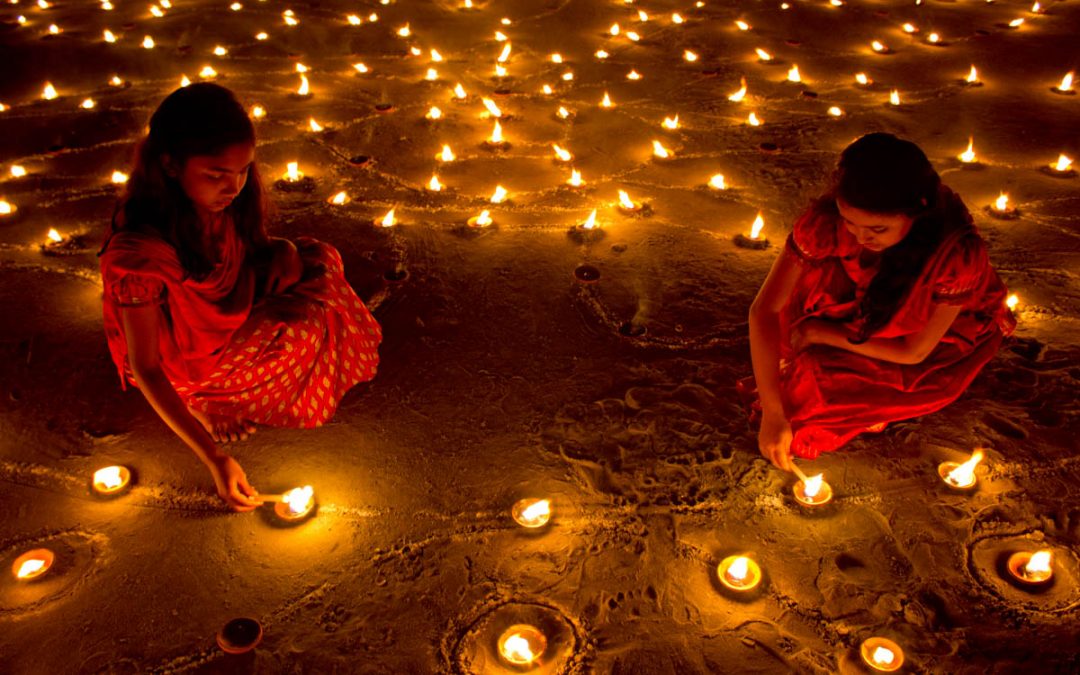
by Somya Devi | Oct 24, 2019 | Astrology, Conjunctions, Holy Days, Planets Changing Signs
The Sun and Moon will join at 10° sidereal Libra this Sunday night, October 24th, at 8:39 pm PDT. This Dark Moon night commemorates the Hindu holiday of Diwali, the festival of lights. October 27th will actually be the third but main night of celebration of this festival, which begins on Dhanteras on October 25th.
Libra cycle
The New Moon in Libra will begin a Libra cycle, compelling us to find balance, harmony, beauty, and compromise. Venus will have just left his own sign of Libra, a couple of hours before the New Moon, but has been strong there the last several weeks and during most of the Amavasya dark Moon phase leading up to the exact New Moon moment.
One thing to note about the Libra cycle is that the Sun is considered neecha or naturally debilitated there, so self-care becomes especially important during a Libra cycle. Since the Sun relates to our sense of strength and vitality, and Libra is the sign of compromising (or over-compromising) with others, it is possible that our own strength becomes diminished as we elevate the level of energy and attention we give to those around us. Caring for others doesn’t necessarily translate to depleted health, but it can when we overemphasize the outer world and others to the point of neglecting our own self-care.
This is a very important time of year to nourish ourselves, and our inner light, as the outer light is descending. At the beginning of this cycle, set an intention for a mindful self-care routine this month. Light some candles (or turn on your electronic ones) for Diwali on the Dark Moon night, and if possible, take some time each day to offer yourself some time to nourish and honor your personal light. Self-care practices can include yoga, meditation, chanting, art, or self-abhyangha (oil massage). You can also make some herbal tea to nourish yourself during this vata (cold and dry) season.
Swati Nakshatra
This New Moon joins the Sun in Swati nakshatra, a nakshatra that is also known to add to vata conditions, as it gives the power to scatter like the wind, so be aware of restlessness this Dark Moon night. It is ruled by Lord Vayu, wind embodied, and is symbolized by a young plant blowing in the wind, both flexible and strong amidst it. It can be translated as the “priest” or the “sword” and carries hidden spiritual potential from its association with Rahu. The male buffalo is the animal symbol for Swati nakshatra.
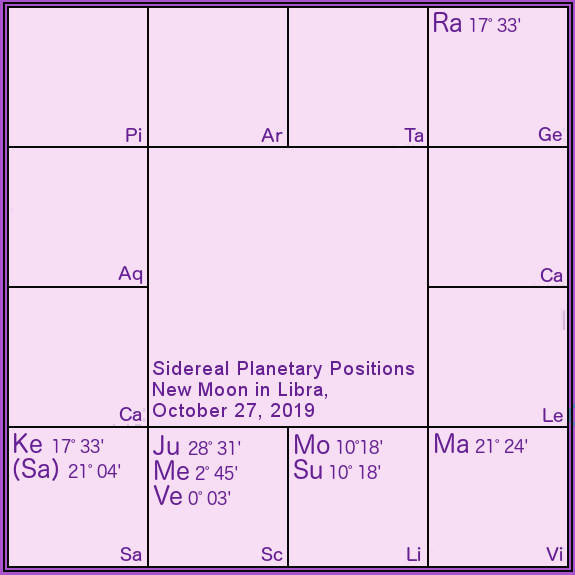
Venus, Jupiter and Mercury
These three benefic planets will be traveling together in sidereal Scorpio from October 26th through November 4th, when Jupiter transits into Sagittarius. The conjunction of these three planets creates a Sarasvati yoga during certain times of day, which could offer auspicious muhurtas (moments) for initiating artistic, educational or spiritual activities. If you were born with a Sarasvati yoga in your natal chart, you may find it more activated during these times.
Jupiter in Sagittarius
On November 4th, we will experience a major movement in the cosmos, as Jupiter transits from Scorpio into Sagittarius. Because the outer planets move slower, they spend longer in each sign, so this transit is important because it will take effect for over a year while Jupiter travels through his own sign. Generally that brings strength to a planet, but with the current conjunction with Saturn and Ketu, also in Sagittarius, we could see an intensification of strange and radical ideologies vying for their place on the world stage.
Dhanteras and Diwali
On the new Moon of the Hindu month of Ashwin (this month), we celebrate Diwali, the festival of lights. The festival begins this year on Friday, October 25th (North America), on the 13th waning Moon phase of the previous cycle. This day is known as Dhanteras, or Dhanvantari Tryodashi, the celebration of the birth of Lord Dhanvantari, the father of Ayurvedic medicine. If you practice any healing tradition, especially Ayurveda, this is a good day to give thanks and call in auspicious blessings to your healing path or practice.
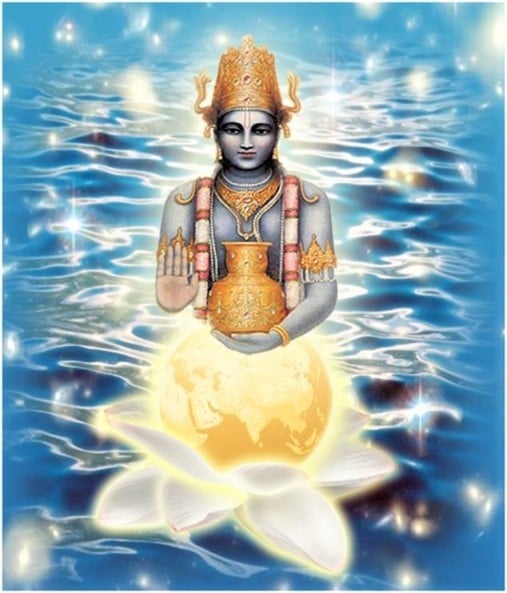
Diwali is strongly associated with the Goddess Laxmi, and is a powerful time to connect with her, calling in her blessings for both material and spiritual prosperity. Dhanteras commemorates the day that Lakshmi emerged from the milk ocean in Vedic lore. In India, it is customary to purchase metals on this day — anything from jewelry to new statues to kitchenware (excluding iron), especially silver and gold — as a part of celebrating Lakshmi and calling in more prosperity. The metals can then be offered to your altar and will absorb and amplify the benefits of worship performed over the few days of Diwali.
We celebrate Diwali while the days are getting noticeably shorter and darker, and it is a time to invite more light into our lives, our hearts, and our world. This festival celebrates the victory of light over darkness, which is something to rejoice in and have faith in, even if we can’t outwardly observe it sometimes. Creating positive vibrations internally is the best way to begin growing and spreading them externally.
Diwali also commemorates Lord Ram’s and Sita’s return from exile after fourteen years (a story from the Ramayana). Lord Ram embodies the highest qualities of dharma, devotion, compassion, courage, and leadership. Diwali is also the start of a new lunar cycle, so it’s a great time to go within and summon these qualities to awaken and live through you.
 Diwali (also seen as Divali, Deepawali or Deepavali) comes from the Sanskrit words deepa (light) and avali (row). It is traditional to light candles throughout Diwali (opt for electronic tea lights if you’re in a fire danger zone!), inviting the highest light into our homes and lives. The candles are lit to remind us of the inner divine light in us all. Though one flame can be used to light many others, it is not diminished by sharing its power of illumination. We can pray for the peace and happiness of all beings, and each one’s awareness of their inner light.
Diwali (also seen as Divali, Deepawali or Deepavali) comes from the Sanskrit words deepa (light) and avali (row). It is traditional to light candles throughout Diwali (opt for electronic tea lights if you’re in a fire danger zone!), inviting the highest light into our homes and lives. The candles are lit to remind us of the inner divine light in us all. Though one flame can be used to light many others, it is not diminished by sharing its power of illumination. We can pray for the peace and happiness of all beings, and each one’s awareness of their inner light.

by Somya Devi | Sep 27, 2019 | Astrology, Events, Holy Days
Maha Navaratri 2019 is upon us! In this important Hindu holiday, we celebrate the Goddess through “the great nine nights” (nav = nine, ratri = night). This festival will run from September 29th through October 8th, the first ten days of this new lunar cycle. Goddess, Devi, Shakti, Durga, Divine Mother—the many names and forms all represent the dynamic and fluid feminine power that enlivens all of existence.
She is the creatrix, the warrioress, the nurturer, the purifyer, the protector. While she’s in the innocent and fertile maiden so is she the wise and learned crone. Both the nurturing mother, and the one who gives “tough love.” The impassioned lover, the devoted bhakta, the disciplined yogini. We see Goddess appear through us in innumerable manifestations. Through her many forms she teaches us and offers us countless blessings–love, compassion, courage, learning, discipline, surrender, success, enlightenment, and bliss. This festival is a time for celebrating the supreme feminine power in all her glory, and the many blessings she bestows upon us.
As with most Hindu celebrations, this festival correlates with the lunar calendar, and thus begins on the first day of the waxing Moon after the New Moon of September 28th. The celebration is through the “nine nights” of September 29th through October 7th, and into the tenth morning known as Vijayadashami, “the day of victory.” Worship during Navaratri is most generally dedicated to Goddess in the form of Durga, the demon-slayer, but there is much nuance and variation to practice and forms of celebration throughout India. Above all, Navaratri is a community celebration of the Divine Mother, and the love, abundance and protection she gives.
There are many Navaratri celebrations throughout the year, but the fall-time Navaratri is the most widely celebrated, and is thus called Maha Navaratri – “the great nine nights”. It correlates with the time of the harvest, a time to give thanks for the abundance of the year’s work. Grains and crops are often offered to Devi as part of the celebrations. Ritualistic worship (puja) typically occurs in homes and temples throughout the nine nights and into the tenth morning of celebration.
The Many Forms of Goddess
Durga-Lakshmi-Sarasvati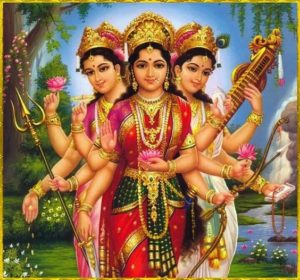
In Kerala and other places in India, the first three nights of worship are dedicated to Durga (the invincible), the next three to Lakshmi (Goddess of prosperity), and the final three to Sarasvati (Goddess of learning). Durga, also celebrated as her incarnation of Kali, helps us to destroy and remove the negative tendencies in our minds and hearts, freeing us from the obstructions to our spiritual and material pursuits. Lakshmi helps us to cultivate positive qualities like compassion and devotion, and leads us towards both spiritual and material prosperity. Sarasvati assists us in attaining knowledge and wisdom, through the illumination of our consciousness. She aids in awakening sattva, the quality of purity, and the flow of prana, the vital breath. After removing inner and outer obstacles and cultivating prosperity through virtuous qualities, our devotion, service, and practice help us to attain a state of peace, bliss, and oneness.
Sarasvati-Lakshmi-Kali/Durga
In the Kali Kula (Kali school of worship) in northeastern India, Sarasvati is worshiped on the first three nights, followed by Lakshmi on the next and then Kali/Durga on the last three. Sarasvati, Lakshmi, and Kali/Durga (Kali emerged from Durga) are also known as the consorts of Brahma, Vishnu, and Shiva. The Goddesses, therefore, provide the shakti to the cosmic processes of creation, preservation, and death (transformation), similar to their male counterparts. Consequently, worship in this manner is dedicated to the cycles of life and Mother nature, through birth, then sustenance, then death. Death is not a complete stop, but allows for the regeneration of energy into a new cycle once again.
9 Forms of Durga
Throughout India, the nine nights of Navaratri are often dedicated to 9 different incarnations of Durga, allowing the worship of many different aspects of Shakti in a gradual evolution. You can read the stories and significance of these 9 goddesses here, or a more a brief introduction, here:
“Daughter of the mountain”; creative energy, muladhara (root chakra), awakening; Awaken your connection with Goddess today or initiate a new venture, calling on Shailputri for new beginnings.
The ascetic; tapas, discipline, devotion, strength, wisdom, creative abundance; Good day for fasting and meditation, connection with svadhistana (sacral chakra).
Warrioress; protection, courage, grace, manipura (solar plexus); Destroy your internal obstacles by offering them to Chandraghanta.
Creatrix of the “cosmic egg”; strength, health, happiness, success, relationships; Connect with the vital Sun energy and the anahata (heart chakra) today.
“Mother of Skanda/Kartikeya”; motherly love, nourishment, protection, purity; Call on divine truth through the vishuddha (throat chakra), invoking Skandamata to lead you towards victory.
Warrioress who destroyed Mahishasura (the buffalo demon); victory, devotion, strength, removing obstacles; Meditate on these qualities of Goddess through the ajna chakra (third-eye) today.
“Dark/black night,” representing a fierce form of Durga/Kali; darkness, death, surrender, dissolution of pain; Connecting with the sahasrara (crown chakra), remember that Divine Mother offers love, compassion, and many blessings even in hard times. Even in the midst of apparent darkness, and helps us to go beyond the boundaries of the material body-mind and connect with spirit.
“Great white goddess”; detachment, purification, renewal, protection, virtue; Through detachment and devotion, we emerge purified, shining and radiant after surrendering in the dark night. Rejuvenative herbs and foods are good today.
Goddess of “siddhis”; magical, spiritual or mystic powers and blessings, fulfillment of desires, devotion, divine union; Invite Goddess to reveal her presence to you everywhere and in every moment.
Personal Practice Ideas for Navaratri
If possible, it is great to reduce our workload and gather with community at local temples or places of worship. We can also create a little time and space at home and conduct some personal practices to celebrate Goddess energy. Dive into your own heart to connect with the inner Goddess in the ways that resonate most with you! Here are some ideas to do at home or with a group throughout the nine nights of Navaratri:
Altar
Create a sacred space, a Durga altar, or a Goddess altar. Even if you already have one, you can refresh it in some way or rearrange it specifically for Navaratri. Include images or statues of the Goddess(es) you have a relationship with. This could be according to one of the groups of forms above.
Invocation
Even if you don’t have much time, dedicate at least a few minutes each day to connecting with the Divine Mother in front of your altar, calling her energy into your life and being.
Journal
Write in your journal about what qualities of Goddess you perceive and connect with. What aspects would you like to strengthen or to cultivate more deeply? Write any and all prayers and offer them to the form of Goddess that appeals to you.
Light
Offer light to illuminate Goddess’s power, helping her to shine more brightly into the world and your life. You can light a candle by the altar and keep it burning when you’re at home. You can even keep an electronic tealight on symbolically when you are away.
Flowers/Grains
Offer flowers or grains (even a small dish of dried rice) to celebrate Devi in the form of mother nature, fertility, the abundance of the harvest, and the cycle of life.
Offerings
Offer incense, bells, water, or food if you feel called, by placing it on the altar, or mentally offering it to Goddess throughout the day. You can also offer something symbolic of your own work or practice, whatever you have been cultivating for harvest through the year. In offering this you surrender the fruits of your efforts to the Divine Mother.
Fasting
Some people choose to fast in some variation, if this is something you have practiced before. This might include fasting during the day, fasting with only milk or fruit, or abstaining from alcohol and non-vegetarian foods during Navaratri.
Chanting
Chanting the Devi Mahatmyam, a verse to the Goddess, is a common practice during the nine-night festival. You can also chant another Goddess mantra or songs that are special to you and your relationship with Devi.
Jai Ma Durga!
Personal Vedic Astrology readings and forecasts are available Here.
Did you like Maha Navaratri 2019? Please Like, Comment and Share!













